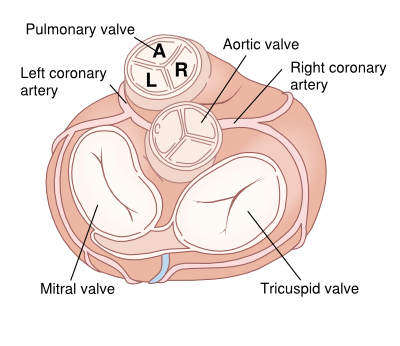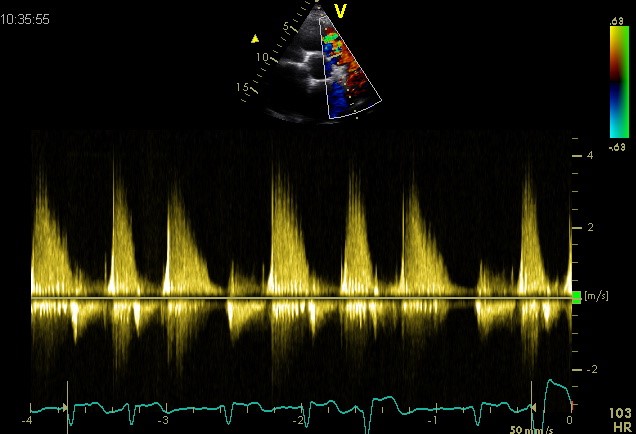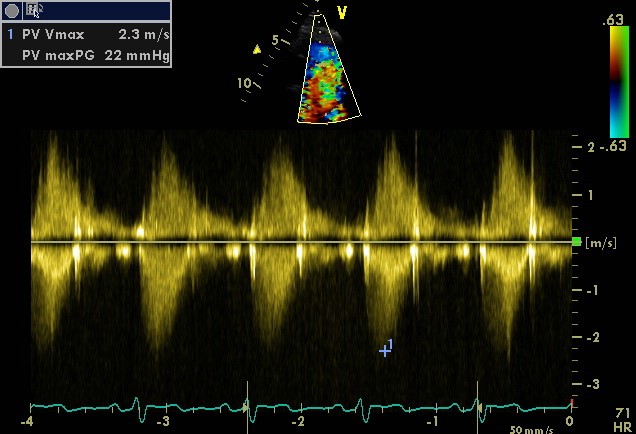Pulmonary regurgitation (PR) is a volume load for the RV. Important regurgitation will lead to RV dilation. Due to this volume load the RV will endure long but eventually will fail.
Quantification of pulmonary regurgitation
| Grading the severity of PR |
| PR severity classes |
Mild |
Moderate |
Severe |
| Qualitative parameters |
| Valve morphology |
Normal |
Normal/Abnormal |
Abnormal |
| Colour flow PR jet width 𝛼 |
Small, usually <10mm in length with a narrow origin |
Intermediate |
Large, with a wide origin; may be brief in duration |
| Reversal flow in pulmonary artery branches |
Absent |
Absent |
Present |
| CW signal of PR jet 𝛽 |
Faint/Slow deceleration |
Dense/variable |
Dense/steep deceleration, early termination od diastolic flow |
| Pulmonic vs aortic flow by PW |
Normal or slightly increased |
Intermediate |
Greatly increased |
| Semi-quantitative parameters |
| VC width (mm) |
Not defined |
Not defined |
Not defined |
| Deceleration time of PR (ms) |
Not defined |
Not defined |
<260 |
| Pressure half-time (ms) 𝛾 |
Not defined |
Not defined |
<100 |
| Jet width/annulus ratio (%) |
Not defined |
Not defined |
>65 |
| PR index 𝛿 |
Not defined |
Not defined |
<0,77 |
| Quantitative parameters |
| EROA (mm²) |
Not defined |
Not defined |
Not defined |
| R Vol (mL) |
Not defined |
Not defined |
Not defined |
| RF (%) |
<20 |
20-40 |
>40 |
| Structural parameters |
| RV size 𝜀 |
Usually normal |
Normal or dilated |
Usually dilated |
CW, continuous wave; EROA, effective regurgitant orifice area; PR, pulmonic regurgitation; RV right ventricle; PW, pulsed wave; R Vol regurgitant volume; VC, vena contracta.
𝛼 At Nyquist limit of 50-60 cm/s.
𝛽 Steep deceleration is not specific for severe PR
𝛾 Pressure half time is shortened with increasing RV diastolic pressure.
𝛿 PR index ratio of PR duration by CW Doppler to total diastolic time.
𝜀 Unless for other reasons, the RV size is usually normal in patients with mild PR. In acute severe PR, the RV size is often normal. Accepted cut-off values for non-significant RV enlargement (measurements obtained from the apical 4-chamber view): Mid RV dimension ≦33mm, RV end-diastolic area ≦ 28cm², RV end-systolic area ≦16cm². RV fractional area change >32%, maximal.



